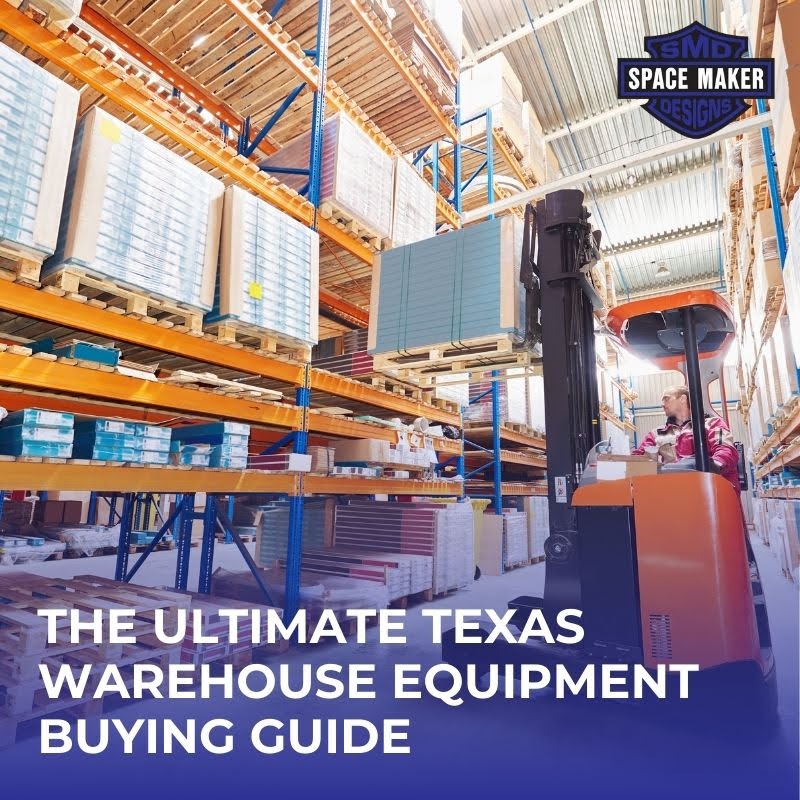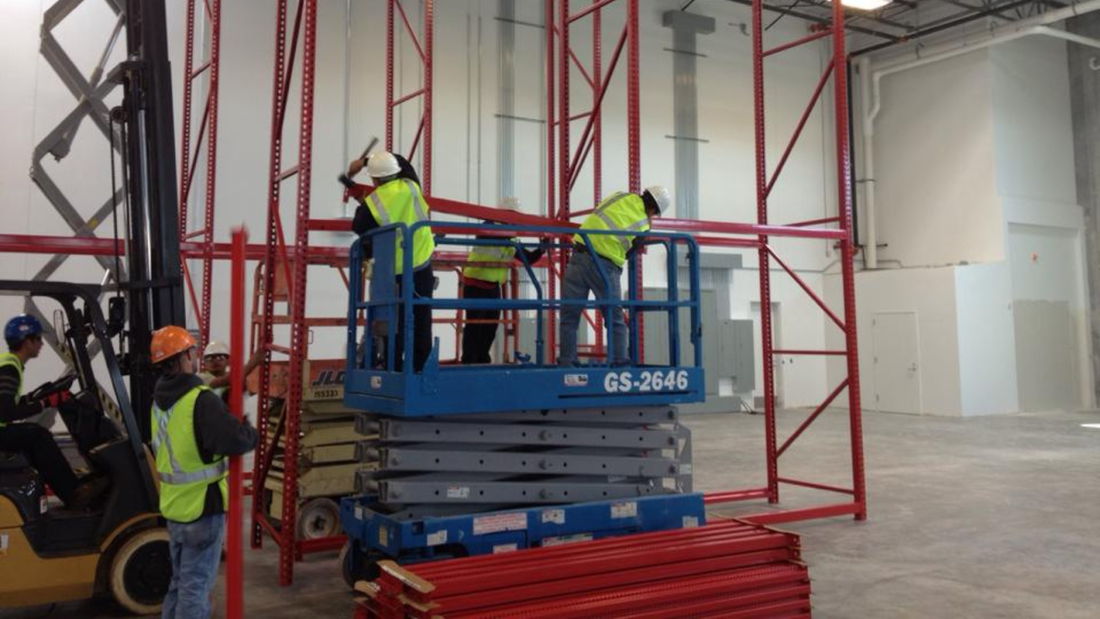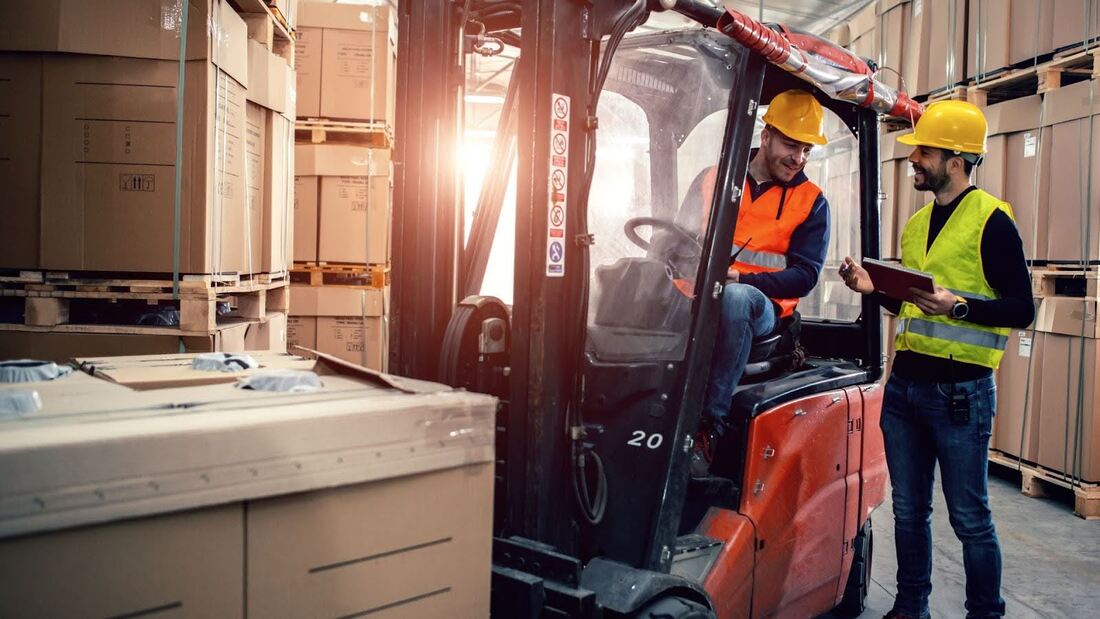Key Takeaways
- Optimizing Texas Warehouse Operations: Successful warehouse operations in Texas rely on understanding spatial needs, inventory specifics, and proper equipment selection for storage, handling, and safety.
- Strategic Financial Planning for Warehouse Equipment: Consider financial aspects of equipment investment with a focus on ROI, long-term planning, and compatibility with existing systems and technologies.
- Navigating Texas Regulations: Keep in mind Texas-specific regulations for equipment and ensure continuous maintenance, team training, and environmental responsibility. To effectively meet these requirements, consider leveraging our comprehensive Warehouse solutions. Our services are designed to align with Texas regulations, ensuring your operations are both efficient and compliant. Learn more about how we can support your Warehouse needs in Texas by visiting Space Maker Designs.
Efficiency and optimization are the cornerstones that can either build or bust the entire operation. The right equipment doesn't just empower your workforce but transforms your warehouse into a hub of productivity and safety. Texas, known for its vast infrastructure and booming industries, demands a strategic approach to equipment selection to stay ahead of the game. In this context, our Forklifts and Scissor Lifts are essential tools for any Texas warehouse looking to enhance efficiency and safety. These high-quality, reliable machines are designed to meet the specific needs of your operation, ensuring you stay competitive and productive. Explore our range and find the perfect fit for your warehouse at Spacemaker Designs.
Understanding Your Warehouse Needs
To select the right equipment, first, understand your warehouse operations at a granular level. Consider inventory turnover rates, picking methodologies, and the overall movement within the space. Assess floor load capacities and ceiling heights, as these will influence the equipment you can accommodate. Pay attention to your workforce's needs to ensure the tools you provide align with ergonomics and efficiency. A comprehensive understanding of your current and anticipated operational needs will form the solid foundation of your equipment strategy.
Ready To Optimize Your Texas Warehouse?
- Maximize Efficiency: Implement cutting-edge storage and material handling solutions.
- Stay Compliant: Navigate Texas regulations with confidence.
- Invest Smart: Choose equipment that delivers optimal ROI.
Planning Your Equipment Investment
Budget Considerations
Investing in warehouse equipment requires a fine balance between cost and functionality. Establishing a clear budget up front is crucial, as it prevents overspending and helps prioritize what types of equipment are essential. Remember, the least expensive option is not always the most cost-effective in the long run. Factor in not only the purchase price but also the long-term costs of operation, maintenance, and potential downtime if the equipment fails. Allocate funds for quality pieces that promise durability and demonstrate a lower total cost of ownership.
Short-Term vs. Long-Term Planning
Smart equipment investment means looking beyond today's needs and anticipating future changes. What works now may not suit your operations in the coming years if you anticipate growth or changes in product lines. Consider equipment with flexibility built into its design, allowing for modifications and expansions. This foresight can prevent costly overhauls down the line and provide the adaptability to keep pace with business development and market demands.
Return On Investment (ROI)
Measuring the ROI on warehouse equipment involves analyzing productivity gains, cost savings, and improved safety against the investment made. The right equipment can reduce labor costs, increase storage density, and minimize accidents, translating into a solid return. It's important to track these metrics pre-and post-purchase to validate your investment and guide future purchasing decisions.
Types Of Warehouse Equipment Essential For Texas Businesses
Storage Solutions
Storage equipment is at the heart of warehouse functionality, from pallet racks to shelving units. In Texas, where the scale of operations can be large, maximizing storage density while maintaining accessibility is key. Invest in solutions that streamline picking processes and ensure easy inventory access. Versatility is also important; select configurations that can handle different sizes and weights, allowing for a dynamic range of products.
Material Handling Equipment
Efficient material handling equipment is non-negotiable for timely and safe warehouse operation. Forklifts, conveyors, and pallet jacks should be chosen based on load requirements and maneuverability within your space. Texas warehouses dealing with high volumes or heavy items will benefit from robust equipment that can operate under consistent strain, improving workflow and reducing strain on personnel.
Safety And Accessibility Equipment
No warehouse can afford to overlook safety. Items like guardrails, safety netting, and anti-slip floor tape are essential. In Texas’s dynamic weather conditions, climate control can also be critical to ensure not just the comfort but also the safety of your staff. Accessibility tools such as platforms and ladders need to comply with regulatory standards to ensure a safe working environment for all team members.
Factors To Consider When Purchasing Warehouse Equipment
Quality And Durability
In the harsh Texas environment, equipment must withstand extreme temperatures and heavy usage. Opt for quality materials and construction that promise durability. Equipment breakdowns can result in operational delays and increased costs, so a higher initial investment in robust equipment can save money and trouble over time.
Compatibility With Existing Systems
When adding to your warehouse, consider how new equipment will fit with existing systems. It should integrate seamlessly for optimal operation, not create bottlenecks or require extensive modifications to your current setup. Analyzing the interoperability of equipment before purchasing ensures a smoother transition and a more cohesive operational environment.
Energy Efficiency And Environmental Impact
Energy-efficient equipment is not just good for your bottom line but also the environment. In a state like Texas, where energy use is high, opting for equipment that consumes less power is both economically and socially responsible. Additionally, considering the environmental impact of your equipment choices can enhance your company's reputation and comply with increasing consumer and regulatory demands for sustainable practices.
Navigating Texas Regulations For Warehouse Equipment
Compliance With Safety Standards
Warehouses in Texas must adhere to both federal OSHA regulations and any state-specific safety standards. Ensure that equipment purchases meet these regulations to avoid penalties and create a safe working environment. Staying compliant means not only following current standards but also staying informed about changes to avoid future compliance issues.
Building Codes And Permitting
Before installing new equipment, verify that it meets local building codes, which may include fire safety and structural integrity stipulations. Obtaining the necessary permits is a critical step that can prevent costly legal issues and delays. Work with suppliers who understand Texas building codes and can guide you through the permitting process.
Environmental Regulations
Texas has specific requirements for managing waste and emissions, including those from warehouse operations. When purchasing equipment that may impact the environment, such as refrigeration units or machinery with exhaust emissions, confirm they are within the state's regulatory parameters. Responsible disposal of old equipment is also a consideration to ensure compliance with environmental regulations.
Installation And Integration
Professional Installation Services
Proper installation can make or break the functionality of your warehouse equipment. Utilize professional services to ensure that everything is set up correctly, anchored, and calibrated to the manufacturer's specifications. This minimizes mishaps, ensures the longevity of your equipment, and maintains warranty eligibility should issues arise.
Integrating New Equipment Into Existing Systems
Adding new equipment to an existing setup requires careful planning to ensure compatibility and minimize disruptions. You might need to adjust workflows, update software systems, or retrain employees for proper use. Taking the time to integrate equipment thoughtfully can maximize benefits and minimize downtime.
Technology Integration
Technology plays an increasingly critical role in warehouse operations. Equipment that can connect to warehouse management systems (WMS) for real-time data tracking contributes to more informed decision-making. Texas businesses should seek out solutions that provide technological advantages and support data-driven management practices.
Training Your Team
Necessary Training For Safe Equipment Use
Any new equipment introduction should come with comprehensive staff training. Well-trained employees operate equipment more efficiently, make fewer mistakes, and are less likely to be injured on the job. It's important to invest in proper training sessions that cover both everyday use and emergency protocols. This is especially true for handling Forklifts and Scissor Lifts, which are essential in many warehouse operations. We offer a range of these vehicles, coupled with detailed training programs to ensure your team is fully prepared and safe. Explore our Forklifts and Scissor Lifts at Spacemaker Designs to enhance your operational efficiency and safety standards.
Ongoing Support And Education
Training should not be a one-time event. As equipment and regulations evolve, so should your training programs. Provide refresher courses and stay on top of educational opportunities to ensure your team is equipped with the latest knowledge and skills. Encourage a culture of continuous improvement where learning is integral to operational success.
Implementing A Training Program
Structuring a training program tailored to your warehouse needs and equipment types is essential. Include hands-on sessions, supervision, and evaluation to ensure effectiveness. The investment in a well-designed training program will pay off in operational excellence and a proactive, knowledgeable workforce.
Maintenance And Upkeep Of Warehouse Equipment
Routine Maintenance Tips
Regular maintenance extends the life of your equipment and prevents costly breakdowns. Develop a routine maintenance schedule based on manufacturer recommendations and the unique demands of your operation. Texas warehouses with high heat and dust may require more frequent cleaning and inspections to keep equipment in top shape.
Addressing Repairs And Replacements
A reactive approach to equipment failure is a recipe for downtime. Proactively identify parts that are at risk of failure and keep critical spare parts on hand to reduce repair times. If repairs become too frequent or costly, it may be time to consider replacement to ensure reliability and productivity.
Record Keeping And Accountability
Maintain detailed records of maintenance and repairs for every piece of equipment. This not only helps in scheduling future work but can also assist in warranty claims and resale value calculations. Assigning staff members accountability for specific equipment can further enhance care and oversight of your warehouse assets.
Final Thoughts On Texas Warehouse Equipment
Effective warehouse equipment selection and management are critical for Texas businesses aiming to thrive in a competitive landscape. With thoughtful planning, careful consideration of essential factors, and adherence to state regulations, your equipment can drive productivity and profitability. Remember, the right investment in equipment is an investment in your business's future. To ensure you make the most informed decisions, explore our comprehensive Warehouse solutions tailored for Texas businesses. Our expertise in equipment selection and management will help you maximize efficiency and stay ahead in the market. Learn more about how we can support your business's growth at Space Maker Designs.
Read Also:
Read Also:
- 5 KEY BENEFITS OF METAL SHELVING SYSTEMS FOR ORGANIZING YOUR SPACE
- THE COMPLETE GUIDE TO CHOOSING THE RIGHT WAREHOUSE SHELVING FOR YOUR DALLAS BUSINESS
- A COMPREHENSIVE OVERVIEW OF DIFFERENT TYPES OF WAREHOUSE RACK
Frequently Asked Questions About Texas Warehouse Equipment
How often should warehouse equipment be serviced in Texas?
Service frequency may differ based on usage and environmental factors. Texas's high heat and dust levels may require more frequent maintenance to ensure equipment functions correctly.
Can warehouse equipment operations be affected by Texas weather?
Indeed, the extreme Texas weather, such as intense heat, can influence the performance and lifespan of warehouse equipment. Appropriate maintenance and climate control measures are critical to mitigating these effects.
What are the key signs that warehouse equipment needs replacing?
Noticeable performance declines, increased downtime due to repairs, escalating maintenance costs, and safety risks are primary indicators pointing toward the replacement of warehouse equipment.
Is it better to lease or buy warehouse equipment in Texas?
Determining whether to lease or buy hinges on financial flexibility, operational requirements, and equipment longevity. Leasing offers adaptability whereas buying tends to be more economical over time.
How do I know if my warehouse equipment is OSHA-compliant?
Confirm OSHA compliance by reviewing federal and state-specific guidelines and consulting with manufacturers or a qualified safety inspector.
Are there tax benefits for investing in warehouse equipment in Texas?
Potential tax incentives such as deductions or benefits may be available for equipment investments in Texas; it's advisable to consult a tax advisor for specific information pertaining to your business.
Do I need special permits for warehouse equipment installation in Texas?
Significant installations or modifications can demand permits. Always verify local building codes and obtain the necessary permissions before proceeding with installations.
Can I retrofit older warehouse equipment with new technology?
Retrofitting is possible with certain types of equipment; evaluate the cost-benefit ratio and compatibility before updating older machinery with newer technology.
What should I do with old warehouse equipment that I'm replacing?
Properly dispose of, sell, or recycle old equipment, following Texas's environmental regulations and guidelines for equipment disposal.
How can I improve energy efficiency in my Texas warehouse equipment?
Select energy-efficient equipment, adhere to regular maintenance schedules, and employ intelligent systems to manage and reduce energy consumption.



